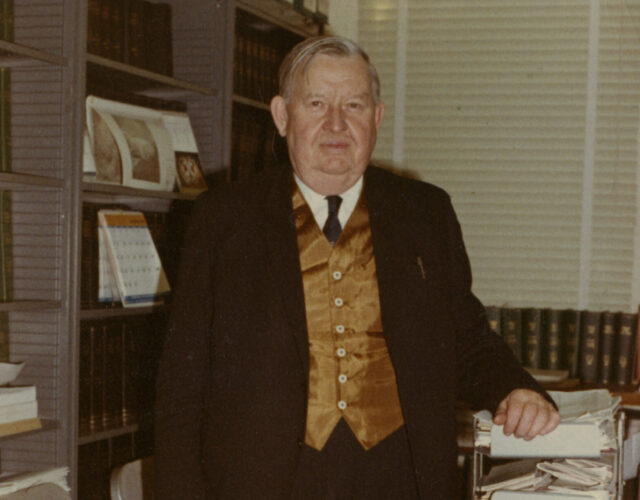On January 27, 1967, a fire killed three NASA astronauts during a launch test. While the specific source of the fire in the Apollo 1 command module was never identified, NASA considered “vulnerable wiring” the most likely cause.
In the aftermath NASA began to look for better materials to protect its astronauts. For fire protection, it turned out the perfect molecule already existed.
In the late 1950s chemist Carl “Speed” Marvel had created a tough, nonflammable polymer that melted only at extraordinarily high temperatures. It was hard to turn into a useful fiber and impossible to mold. Hardy polymers, such us Marvel’s polybenzimidazole, or PBI for short, held great allure for the U.S. Air Force, which was funding a search for incombustible and heat-tolerant materials. After Marvel, his colleague Herward Vogel, and other chemists in the early 1960s figured out how to spin PBI into a strong fiber, the air force began testing it in several applications. The fiber ended up being too expensive for the air force’s tastes, but NASA found what it was looking for to protect its crews: a textile with the flame resistance of asbestos but without its carcinogenic properties. Beginning in the 1970s, PBI was used in astronauts’ clothing and in webbing, replacing much of the flammable material that had previously accompanied astronauts.
NASA found more uses for PBI. In the early 1960s another air force-funded chemist, Harold Levine, found a way of reacting the ingredients of PBI into a moldable form and combining them with glass fiber. Eventually Marvel, Levine, and their successors’ work led to PBI and its chemical relatives being used in the nose cones of spacecraft, where they served as a heat shield, and in other parts subject to serious stress. PBI began to appear in industrial settings, where it is still found in machinery used to make semiconductors and in heavy-use parts, such as bearings: PBI can survive harsh and corrosive environments in which other materials would fail.
In the 1980s PBI-enhanced textiles became commercially available, and airplane manufacturers and carmakers began to use PBI in aircraft seating and automobile brakes. Many fire units also began clothing firefighters in fabrics containing the fiber. But the fabric’s success also created problems. Firefighters were more likely to risk themselves in a fire, even when no civilians were in danger. In addition, by the time firefighters felt any heat, their clothing had already absorbed a huge amount of energy; without a quick way to safely remove their suits, firefighters would overheat.
PBI is still being tried in new roles, most recently as a membrane that captures carbon dioxide before it is released from power-station smokestacks.
In 1969 Levine received the ASTM Adhesives Award for his polymer research. That same year the air force paid homage to Levine in a novel way, by presenting him with a custom-made PBI tie tack and set of cuff links. “That was a big surprise,” says Levine.
Now in his 90s, he recently donated the cuff links and tie tack to the Institute so that they could join other PBI materials in the collections—including a gold-colored PBI vest once owned by Marvel. “I visited [Marvel] in Tucson and he showed me the vest,” Levine says. “He actually wore it!”
And what about his own PBI cuff links and tie tack? Did he ever wear them? “No, I never wore shirts that used cuff links! But believe me, I was tickled pink to receive them.”




